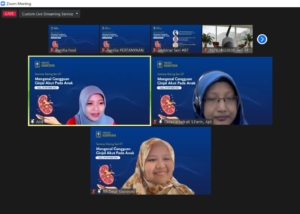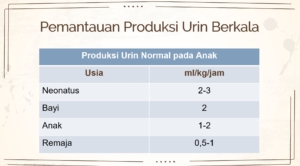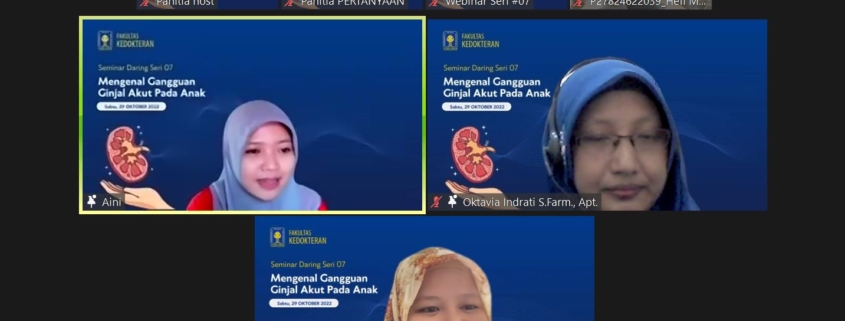Reducing Parents' Worries Regarding Acute Kidney Disorders in Children, FK UII Holds an Online Seminar

dr. RR. Dewi Sitoresmi A., Sp.A and Dr. apt. Oktavia Indrati, S.Farm., M.Sc. as a guest speaker for the online seminar with the moderator: dr. Nur Aini Djunet, M. Nutrition, FINEM
Kaliurang (31/10) — Recently, there has been news that makes parents, especially those with toddlers, feel restless. It was reported that as many as 245 Indonesian children (as of October 23, 2022) suffered from acute kidney failure and several of them died. The increase in the number of cases is thought to be related to contamination of the ingredient ethylene glycol in the syrup medicine consumed by children.
Responding to this problem, the Faculty of Medicine Universitas Islam Indonesia (FK UII) held an Online Seminar Series 07 in the framework of community service with the theme: "Recognizing Acute Kidney Disorder in Children”, on Saturday (29/10).
The first guest speaker, dr. RR. Dewi Sitoresmi A., Sp.A explained the topic of Acute Renal Disorder (AKI) and Atypical Progressive Acute Kidney Disorder (GgGAPA) in children. dr. Dewi explained that acute kidney disease is a sudden decrease in kidney function, characterized by a decrease in urine production which causes accumulation of metabolic waste products such as blood urea and creatinine. "Acute kidney disorder is not a new disease, it has been around for a long time, what has been rife lately is Atypical Progressive Acute Kidney Disease," said dr. Dewi at the beginning of her presentation.
Until now, the cause of GgGAPA is still uncertain, it is still under investigation, the possibilities include: bacterial infection, viral infection, Multisystem Inflammatory System in Children (MIS-C), and toxicity. “Ethylene glycol detected in the patient's blood and urine, namely in 7 patients out of 11 samples conducted in the study, continued dr. Goddess.
“How do we monitor our children at home? The main symptom is reduced urine production, so what must be done is to monitor urine production regularly, "explained dr. Goddess.

The second guest speaker, Dr. apt. Oktavia Indrati, S.Farm., M.Sc. convey material regarding the formulation of syrup drugs. At the beginning of the material, Dr. Oktavia explained various oral liquid dosage forms, namely dry syrup/syrup, suspension, and emulsion. "For syrup preparations, it is simply a preparation whose active substance is completely dissolved in the solvent," said Dr. Octavia.
In the manufacture of liquid drugs, or in general in the manufacture of drugs, medicinal preparations do not only contain the active substance but also contain additional ingredients or are called vehicle. "Additional ingredients in the formulation of syrup drugs include: solvents, so-called solubility enhancers of active substances cosolvent, sweeteners, flavors, preservatives, and acidity/pH regulators," added Dr. Octavia.
Regarding additional ingredients, in liquid preparations there is a potential for contamination of hazardous materials in the formulation especially Ethylene Glycol (EG) and Diethylene Glycol (DEG). EG is a clear liquid, tastes sweet, colorless and odorless, is not used in oral liquid drug formulas, is toxic, and is used as antifreeze in cars. While DEG is a colorless, odorless, and hygroscopic liquid with a sweet taste, it is not used in oral liquid drug formulas, and is toxic.
Dr. Oktavia explained that during the testing of suspected EG and DEG contamination in drug syrup according to the reference used, namely the Indonesian Pharmacopoeia and/or other references in accordance with Law Number 36 of 2009, EG and DEG contamination likely came from 4 (four) additional ingredients namely propylene glycol, polyethylene glycol, sorbitol, and glycerin/glycerol, which are not hazardous materials or are prohibited from being used in the manufacture of medicinal syrups. (Jo)

